China sends first space-faring nation with a probe on the dark side of the moon. On Board a German radiation is the measuring unit of the University of Kiel. DW-Reporter Mu Cui looked around there.
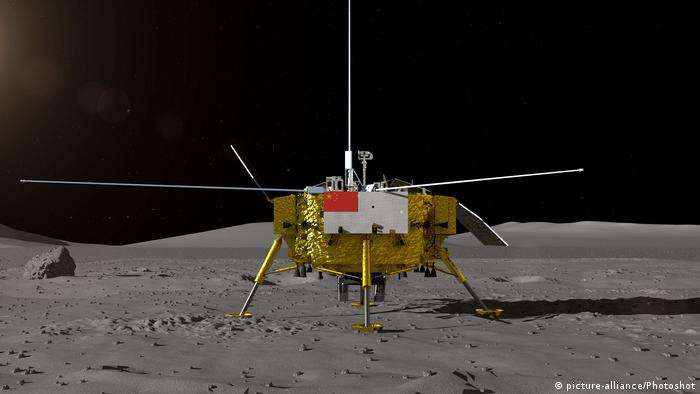
Spacecraft of the Chinese lunar mission Chang’e 4
In the laboratory of the Institute of Experimental and Applied physics of Kiel University, the young scientist Yu Jia is testing the function of a small research unit. He is wearing a plastic cap, latex gloves, special shoes and protective clothing to protect the sensitive detector LND.
LND stands for “Lunar Lander Neutron & Dosimetry”. “The instrument can measure both electrically charged radiation as well as non-charged radiation from neutrons,” says Yu. The detector is no bigger than a paperback. In the night of Saturday local time, he will fly with the Chinese Mission Chang’e 4 to the moon. Chang’e in Chinese mythology, a goddess who lives on the moon.
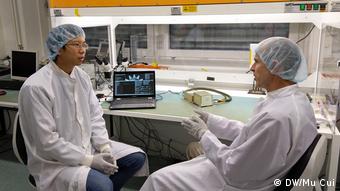
Scientists Jia Yu and Professor Robert Wimmer-Schweingruber (R)
Application to ride
“Three years ago, we were able to present at a Workshop of the Chinese space Agency, our concept for the measurement of the radiation on the moon with LND,” says Robert Wimmer-Schweingruber. He is the project Manager for the LND and Professor for extra-terrestrial physics at the University of Kiel.
“Probably China will be the next manned moon mission launches. And our measurement is important for the preparation of such missions.” The astronauts are in space, namely a particularly strong radiation exposed to the LND measures.
Difficult communication to the moon and back
As soon as the meter is expected to be in four weeks on the moon landing, the measure had received the data in Kiel via a relay satellite, the China, in may, sent into space.
The communication between the back side of the moon and the earth is only a relay station is possible, because the earth’s satellite turns due to the so-called bound Rotation of the earth always the same side. That’s why the landing of the lunar mission from earth is not seen.
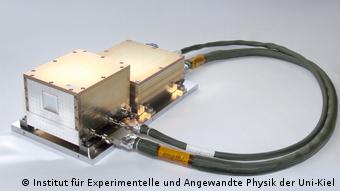
LND-measuring device
New alliances for space missions
Between 1969 and 1972, twelve American astronauts landed on the moon. China and Russia have later sent unmanned missions to the moon. The last time the Chinese moon mission Chang’e 3 in 2013, landed an unmanned spacecraft on the moon.
The space agencies of the USA and Russia, meanwhile, have imposed a costly program for a new space station. To serve as an intermediate station for further lunar and Mars missions.
“I could imagine but it’s good that China are the first to fly to the moon,” says the physicist Wimmer-Schweingruber. “Just because you have the biggest driving force behind the whole space program.” In the 2030s, Chinese astronauts are to land on the moon, so the requirements of the ambitious moon program from Beijing.
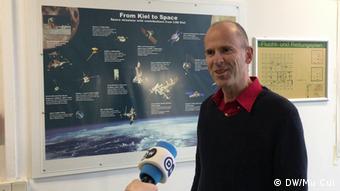
“From Kiel in the space”: a physicist Wimmer-Schweingruber
China as an ESA Partner?
From the European point of view is quite interesting. So far, the astronauts of the European space Agency, ESA, have flown ships with Russian or American space. The German Astronaut Alexander Gerst, for example, the current commander of the International space station, ISS, will return before Christmas with a Russian Soyuz to the earth.
In future projects, such as manned moon – or even Mars missions, a European-Chinese partnership is conceivable, said ESA Director-General Jan Wörner, in a DW Interview in September. He hope to open cooperation in future manned lunar or Mars missions with China.
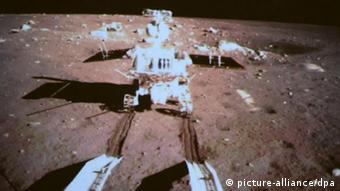
(Archive) China’s moon vehicle in the Mission “Chang’e 3” in 2013
Persistent fever in Kiel
In the Kiel laboratory Wimmer-schweingruber is already working with the young scientists, Yu Jia on the scenarios after the hopefully successful landing on the moon back. The working conditions of the LND-measuring device are hard. It must be measured with a long-lasting cold up to minus 150 degrees Celsius reliable. The first data will be after the new year, the soft landing of the lunar Rover on 3 – provided. January is a success.